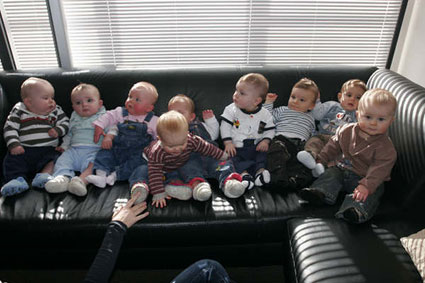Why People of Other Races "All Look Alike" to You
Posted on Categories Discover Magazine

Some may say it as a joke, others might find it offensive, but it turns out there’s some truth to the idea that people of other races “all look alike.” A new study demonstrates that people have more trouble recognizing faces of people of other races.
While this effect has been observed for almost a hundred years, scientists still don’t fully understand why it happens and who it happens to, explains Ars Technica:
It has been suggested that the other race effect is simply a result of differing amounts of facial variation between races, or varying observational abilities of particular races. However, in this study, subjects of both races showed the same trends, suggesting that the other race effect is a generalized phenomenon experienced by people of more than one race.
For the new study, published in the Proceedings of the National Academy of Sciences, researchers monitored the brain activity of 24 subjects (12 western Caucasian, 12 eastern Asian) while they were shown pictures of two faces and asked if they were the same person. The two pictures were always of people of the same race, but were only sometimes the same race as the participant. The two pictures showed people making different facial expressions to make identification more difficult.
In each subject’s brain the scientists watched for a specific electrical spike that they know is related to facial recognition, known as the N170 event-related potential. If the person recognized the two pictures as different people, there were two similar-sized spikes, but if they thought the two pictures were the same person, there was one normal spike and a second, weaker spike.
But this weakened second spike was seen only when a subject was presented with two pictures of a single person who was the same race as the test subject. When a subject saw two pictures of a single person who was a different race, the subject’s brain was essentially flummoxed. Both the Caucasian and Asian groups had a much more difficult time recognizing identical faces from another race, study author Roberto Caldara told New Scientist:
“That suggests it’s a universal phenomenon in our perception,” says Caldara, who adds that people who live among people of other races can learn to identify individuals better. Caldara says his team’s techniques could help identify unreliable witnesses in criminal trials. “If a witness has a really clear other-race effect, we could not be sure that they had really recognised a defendant of another race,” he says.
Related content:
Discoblog: Given the Choice, Liberals Would Rather “Kill Whitey”
80beats: Researcher Discovers Effective Profiling; Says It’s More Trouble Than It’s Worth
The Loom: This is your brain on racism. Or is that liberal guilt?
Not Exactly Rocket Science: Racial bias weakens our ability to feel someone else’s pain
Not Exactly Rocket Science: Williams syndrome children show no racial stereotypes or social fear
Not Exactly Rocket Science: They don’t all look the same – could better facial discrimination lead to less racial discrimination?
Image: Flickr/Juddejah